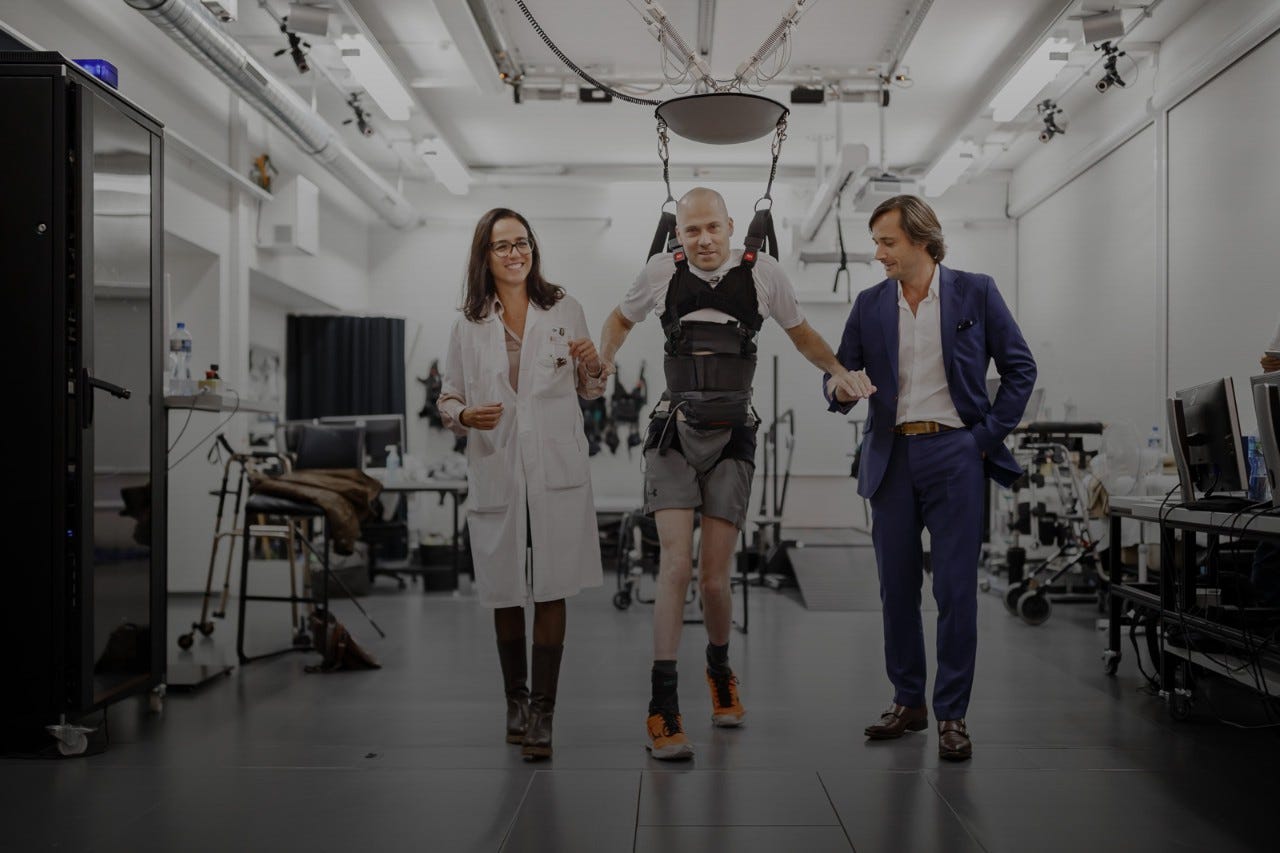Finally able to stand and walk again
An “electronic bridge” linking the brain and the spinal cord developed by a group of researchers in French-speaking Switzerland is giving hope to people with spinal injuries.

Ten years after David Mzee ended up in a wheelchair after a failed triple somersault, the paraplegic sports teacher made extraordinary headlines. At the “Wings for Life World Run 2020” the quadriplegic walked 467 metres before falling back into his wheelchair, tired but happy. This was a personal best for him. Since his accident, he had never walked further and longer on his own two feet.
This feat was made possible thanks to spinal cord stimulation, in which electrical impulses restore the severed connections between the remaining nerve cords and the brain.
Put simply, it creates a light bridge between the injured areas in the spinal cord, enabling communication between the brain and extremities. For example, this bridge enables the command “move feet” to be sent to the right place and triggers the desired movement.
““The more you train, the stronger the muscles become.”
Suddenly back on an equal footing
Léonie Asboth, Head of Clinical Division of NeuroRestore, heads up the associated clinical study (STIMO) at the Lausanne university hospital and has watched several study participants take their first steps after years in a wheelchair. “The fact that those affected can be at eye level with their partners and friends again triggers strong emotions. It still makes me happy, too,” says Asboth.
The clinical study for this invasive therapy method started five years ago. It involves placing a six-centimetre-long implant on the spinal cord and wiring it to a small device – similar to a pacemaker – in the abdomen.
With an external device, patients can select a programme and decide whether they want to stand, walk, cycle or swim, for example. This can usually be done continuously for two to three hours, then the body needs a break before the next stimulation can begin. “The more you train, the stronger the muscles become. But you must make sure not to overtax your body,” says Asboth.
Stimulation also helps regulate blood pressure
Another challenge: Paraplegics are unable to stabilise their blood pressure because the spinal cord injury interrupts the information pathway between the brain and the nervous system. That’s why patients are three times more likely to develop cardiovascular disease.
Fluctuations in blood pressure can cause dizziness and nausea. In cooperation with Canadian scientists, the Swiss team has demonstrated that electrical stimulation of the spinal cord can bring blood pressure back into balance.
A few years to market availability?
This new type of spinal cord stimulation is as yet unable to regenerate the separated nerve fibres: “But we hope that future therapies in combination with stimulation will eventually do that.” There is still a long way to go until then.
After this first stage, the therapy still has to go through a few more studies with advanced technologies before it is approved and made available to paraplegics. “However, we hope that patients will be able to benefit from this new technology in five to ten years,” says Asboth.


